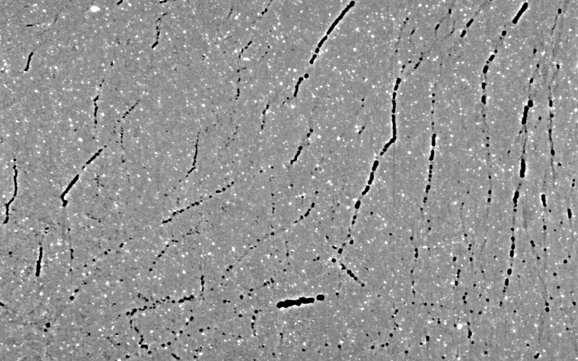3D localisation and visualisation of cracks
Microtomography enables the non-destructive detection and 3D visualization of…
Home » Our services » Multi-scale tomography » 3D characterisation of cracks
Microcracks, crazing, fatigue cracks, shrinkage cracks, or drying cracks… The presence and evolution of cracks determine the mechanical strength, lifespan, functionality, and safety of your products.
If left unchecked, they can lead to premature failures, reduce fatigue resistance, or compromise the integrity of a structure. Using X-ray tomography, we offer a non-destructive, multi-scale 3D analysis to detect, visualize, and quantify internal cracks, from microns to centimeters, and monitor their evolution under real-world conditions.

Dimensions: proportion of the volume affected, overall and local extent
Crack geometry: length, opening, height, slenderness, orientation
Location: position of cracks within the component, proximity to inclusions or interfaces
Connectivity and propagation: crack network, branching, coalescence, tortuosity
Dynamic evolution: in-situ monitoring of crack propagation under mechanical (tension, compression, fatigue), thermal, or environmental stresses
Additive manufacturing – 3D printed alloys and polymers
Metallurgy, Foundry, and Heat Treatment
Welding, brazing, and assembly
Composite materials – fibers + polymer or ceramic matrices
Ceramics, glasses, and refractory materials
Polymers and elastomers
Geomaterials and natural samples
Biomedical materials and tissues
Pharmaceuticals – solid dosage forms
Microtomography enables the non-destructive detection and 3D visualization of…
A recent study conducted by Xploraytion, Novitom, Merck, and…
Why perform microCT during tensile/compression tests? The use of…
A recent study conducted by Xploraytion, Novitom, Merck, and…
Microtomography enables the non-destructive detection and 3D visualization of…
For measurements on R&D samples as well as finished products:
For visual renderings and quantitative results tailored to your needs:
Over 20 years of experience in advanced tomography and interpretation of complex results
Precise quantitative data, non-destructive and multi-scale inspections tailored to your application
Solutions tailored to your constraints, detailed reports and 3D visuals to facilitate decision-making